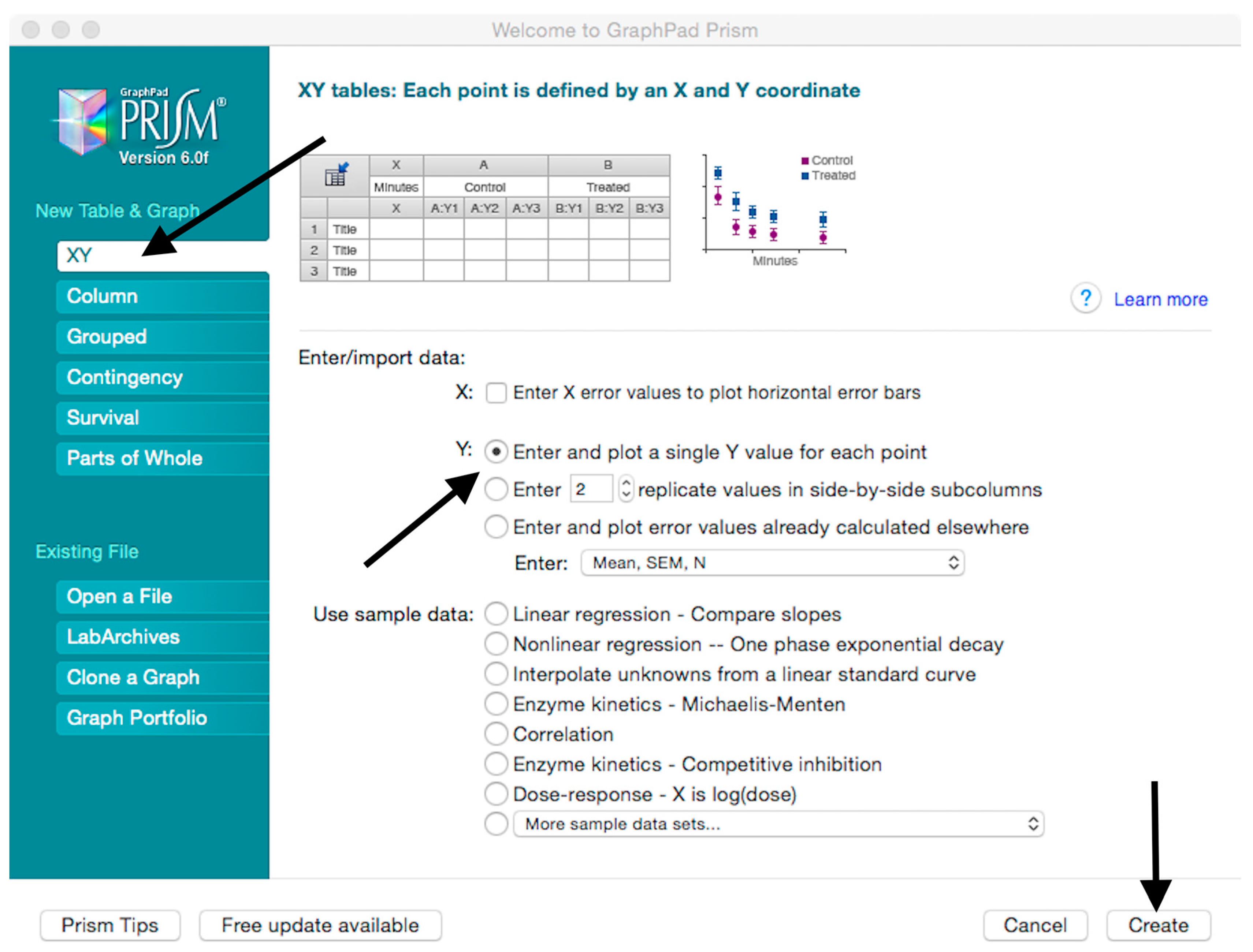
Measurement of arterial stiffness and blood pressureĪrterial stiffness and central blood pressures were measured using a Vicorder device (Skidmore Medical, UK).

#Graphpad prism 8 user guide pdf full
Study participation was voluntary and following full informed consent. Patients and the public were engaged, and continue to be so, in the study design, research questions, outcome measures, conduct and logistics of the study via focus groups, feedback questionnaires, newsletters and via the ADVANCE study website ( ). Participants with established CVD (history of stroke or transient ischaemic attack, ischaemic heart disease (IHD), peripheral vascular disease) prior to their injury/deployment of interest or evidence of active acute infection at baseline survey were excluded. Identification and sampling of the injured and uninjured groups were undertaken by the Defence Statistics (Health) within the UK Ministry of Defence using deployment and medical records. This baseline analysis of the ADVANCE cohort aimed to investigate, for the first time, the relationship between CRTI, MetS and arterial stiffness.īetween March 2016 and August 2020, male UK military personnel (≥18 years) who had sustained CRTI (sufficient to require aeromedical evacuation) were compared with a frequency-matched comparison group (by age, service, rank, regiment, deployment period and role-in-theatre) of uninjured servicemen.

The ADVANCE (ArmeD SerVices TrAuma RehabilitatioN OutComE) study seeks to address these knowledge gaps in a contemporary population with CRTI. The relationship between CRTI and arterial stiffness has not been examined. 11 12 They were both retrospective and did not include an uninjured comparison group. Two recent studies have reported an association between CRTI and MetS. 9 10 Moreover, increased cAIx has been linked to all-cause mortality and MACE. However, there is increasing interest in central augmentation index (cAIx), which may be a more sensitive marker of early arterial stiffness and endothelial dysfunction. 7 8 Among the measures of arterial stiffness, pulse wave velocity (PWV) remains the gold standard. 6 MetS is associated with increased arterial stiffness and MACE. MetS affects up to 30% of Western adults, with a prevalence that is rapidly rising. Metabolic syndrome (MetS) and arterial stiffness are two recognised markers of cardiovascular risk. 4 There is a need for a contemporary prospective cohort study examining the relationship between CRTI and its severity to earlier markers of cardiovascular risk, which if established would prompt prevention strategies to mitigate the risk.

1–3 However, a recent systematic review and meta-analysis has shown that the strength of this evidence is modest, at best, and derived from retrospective studies relating to injuries sustained ≥40 years ago or from small cross-sectional studies with poorly defined control groups. It has been reported that severe CRTI may be associated with an increased risk of cardiovascular disease (CVD) and major adverse cardiovascular events (MACE).

The long-term health outcomes of survivors of combat-related traumatic injury (CRTI) are unclear.


 0 kommentar(er)
0 kommentar(er)
